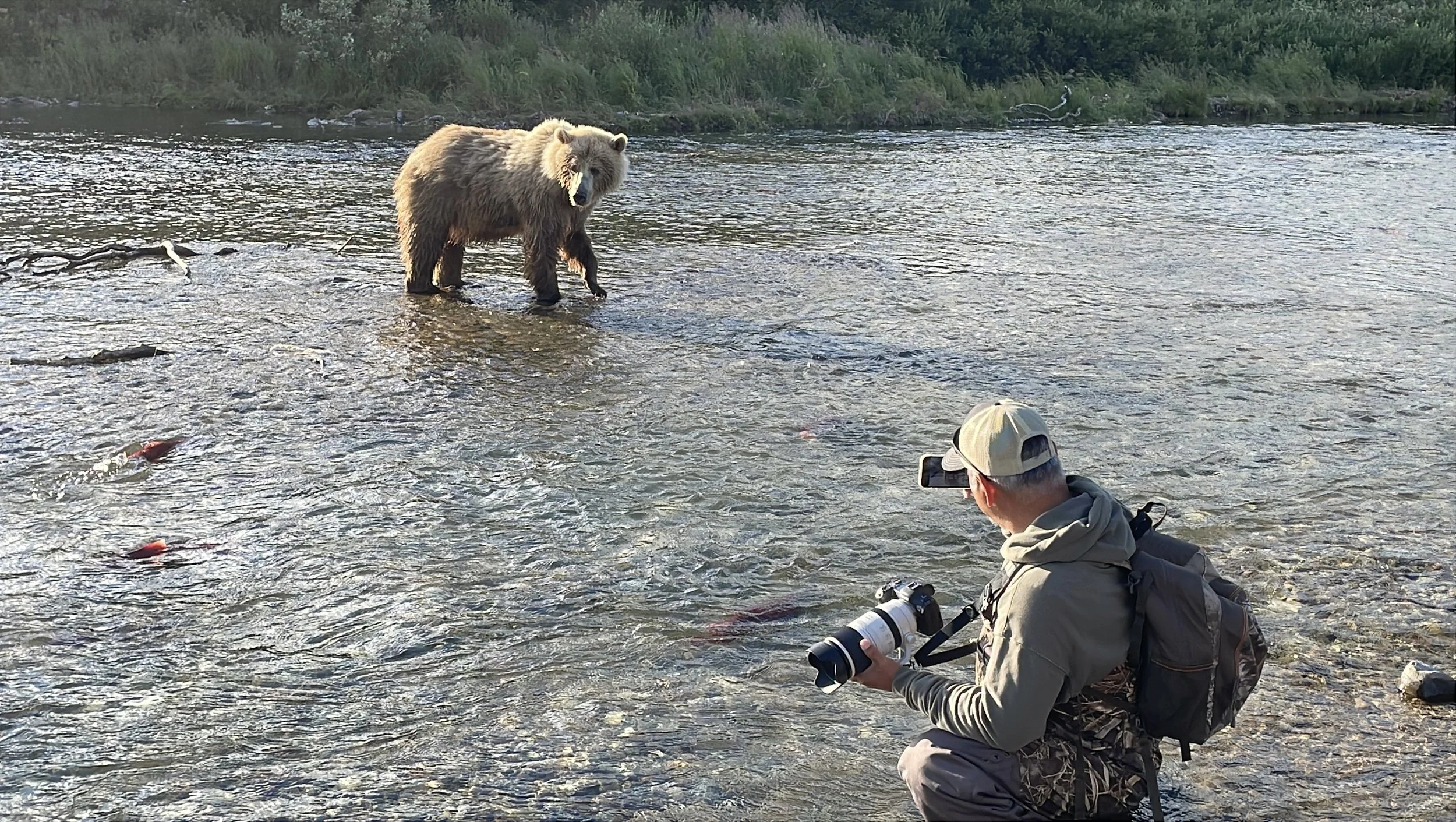Tips from the Field for Wildlife Photographers Who Travel
By Eli Martinez
After years of leading wildlife expeditions all over the world, I’ve learned that the way you pack can shape your entire experience. You’re not heading out on vacation—you’re heading into the wild. And what you bring (and how you bring it) matters.
My 3-Bag Rule (and What’s In Them)
After years of traveling to remote places—from polar bear country to the Caribbean Islands—I’ve refined my personal system down to three bags:
One suitcase for clothing, winter layers (if needed), dive gear, and essentials
One second carry-on for my underwater camera housing and delicate gear
One backpack—my lifeline
Of course, this only applies to personal trips.
If I’m filming a TV show or documentary, that rule goes out the window. Then it’s cases, crates, backups of backups, and checked bags for days. But for normal expedition travel—this is the system that works very well for me, and I can carry it by myself.
1. The Suitcase – 50 Pounds of Strategy
Airlines limit checked bags to 50 lbs., so I make every item count. This bag holds my clothing and dive gear—or cold-weather clothing, depending on the trip.
For long expeditions, I only bring a week’s worth of clothing—and I always check if laundry service is available at the lodge. If getting clothes washed is not an option, then I will bring a few extra items.
For warm-weather or ocean expeditions, I pack light but cover all bases:
5–7 SDM t-shirts (including one nicer shirt for dinner out)
2 pairs of shorts
Rash guard and board shorts
3-4 pairs of socks
10 pairs of underwear (because laundry access isn’t guaranteed)
flip flops, or boat shoes (depends on the trip)
I wear my only pair of pants—and if we’re hiking, my boots—on travel days
Wetsuit (thickness depends on location)
Mask, fins, and snorkel
Travel BC and regulator (for our Tiger Beach trips).
My diving Cap.
Back up SDM cap
Boat jacket
Dry bag
Extension cord
Small external speaker
GoPro pole cam and camera housing attachments
Light weight tripod (for shooting northern lights, wildlife videos, or sunsets.)
Portable tea maker ( I always bring one with me )
toiletries
tools for my underwater housing.
Backup battery chargers for my cameras. (always bring a spare)
Head lamp, and or a small flashlight
Portable bag scale. I’m often packing right up to that 50-pound airline limit, so having a small scale makes it easy to redistribute weight or avoid surprises at the counter.
For cold-weather expeditions (like our polar bear trips), dive gear stays home. Unless I am going to Norway for orcas, or Churchill for belugas then snorkel gear comes with me.
I bring:
Heavy winter coat
Waterproof pants and insulated boots
4-5 pairs of long johns
10 pairs of underwear (because laundry access isn’t guaranteed)
4–5 thick socks
4–5 long-sleeve base layers or sweater-weight shirts
Face masks (for wind and cold)
Beanies are a must
Mask, snorkel, and fins (unless I am renting fins, then they stay at home)
Arctic wetsuit (unless I am renting)
exposure jacket (for the boat.)
ski goggles (for the boat in Norway, a must!)
*Important tip: I place an AirTag in every bag I travel with. It’s a simple but critical step to stay on top of your gear—especially when airlines lose things. I once tracked my lost checked bag as it took a vacation around the world before it finally made its way back to me. It is great for peace of mind.
*Also—wheels matter. All my bags have wheels except for my backpack. Even though I love the rugged look of those classic over-the-shoulder expedition bags, they’re just not practical for how I travel. For ease of movement through airports, small towns, and ferry docks, wheels win every time.
2. The Backpack – My Lifeline
This never leaves my side. It’s my mobile office, camera bag, and backup plan all in one.
Inside you’ll find:
Camera bodies, lenses, and extra batteries
Camera Cards
Hard drives and cables
Laptop (laptop charger)
ear phones (with a pair of back-up ear phones)
back up pair of reading glasses (I need them, don’t judge!)
Small drone (if allowed)
Portable external charger This is a must. I was once caught in a hurricane without one, and I’ll never forget that feeling of desperation trying to stay connected with the outside world while my phone was dying. Since then, I never travel without one.
Small hygiene kit: eye drops, toothbrush, contact case, lip balm
Two phone charging cables
Lens wipes and microfiber cloths
International plug adapter
Emergency clothing stash: an extra pair of undies, a rolled-up pair of lightweight pants, and one SDM T-shirt—because I’ve had airlines lose my luggage one too many times
Lightweight jacket: planes are almost always cold, and I’ve used it as a pillow, a blanket, or even something to sit on when my back starts feeling it on long flights
This backpack is my anchor. If everything else goes missing, I can still shoot, move, and function.
3. The Underwater Housing bag.
This one is all about keeping my underwater rig safe and ready:
Underwater camera housing with camera inside
Wide-angle lens
Dome port
Battery charger
Extra batteries
External lights (if I’m using them that trip)
Everything in this case is padded, protected, and crucial to what I do in the water.
*One more thing—for this bag, small, light, and inconspicuous matters. The last thing I want is for my camera bag to draw attention from the wrong people or get flagged to be stowed under the plane. I try to keep it as under-the-radar as possible, choosing low-profile bags that don’t scream “thousands of dollars in gear inside.” It’s all about being smart.
✈️ I Never Travel Without Doing These Things:
Print a copy of my passport and save a digital version on my laptop and phone
Tuck away an extra $100 in emergency cash and a backup credit card somewhere safe
Carry a written list of emergency contacts and phone numbers, just in case I lose my phone
Share my itinerary with a family member or close friend before I leave
It’s a simple checklist, but these things are so important.
Want a printable packing list? Let me know and I will send you a PDF of my packing list.
📦 Bonus: My Personal Packing Rule
If I haven’t used it on my last three trips, it doesn’t come with me.
But if I wished I had it even once—it earns a permanent spot in the bag.
This system lets me travel with confidence… knowing I have what I need, and nothing I don’t.
I hope this helps you show up prepared and ready to create something unforgettable.
Thank you for reading our Blog.
*New Blogs posted 3–4 times a week. (sometimes more.)
Follow along for fresh stories, trip updates, and raw moments from the wild.





